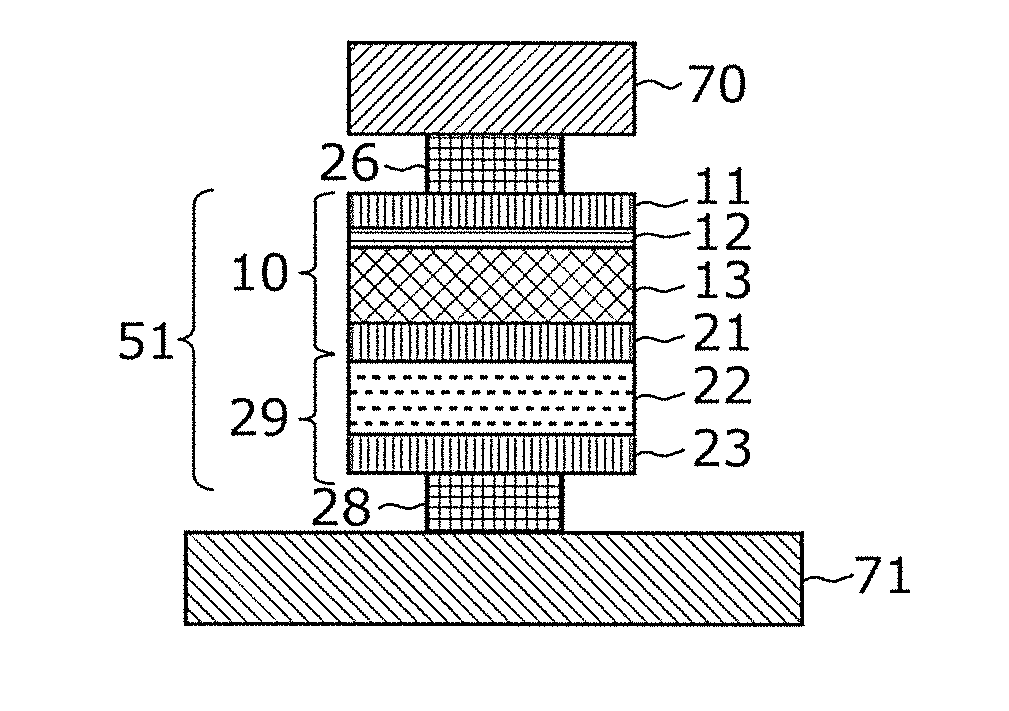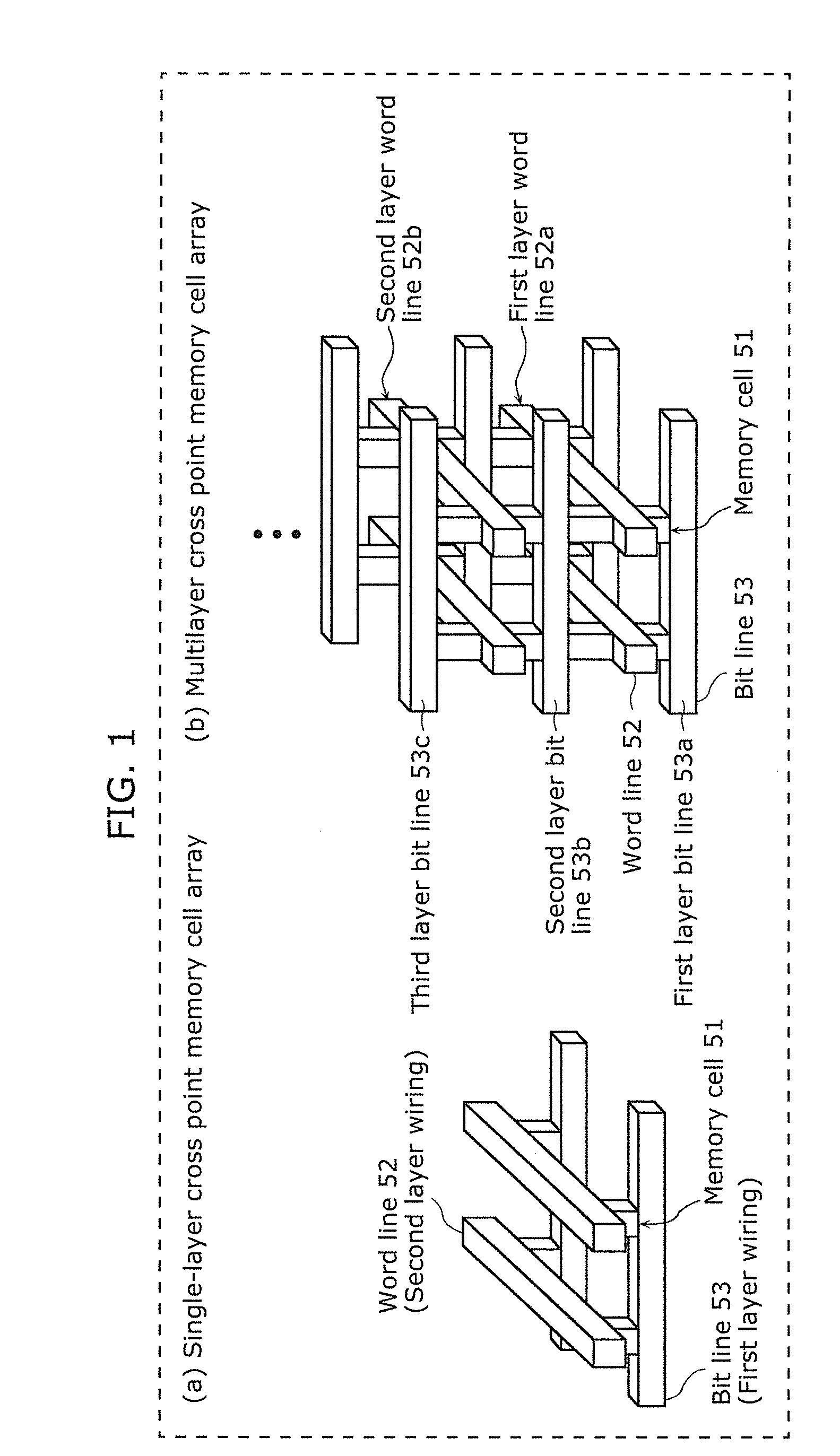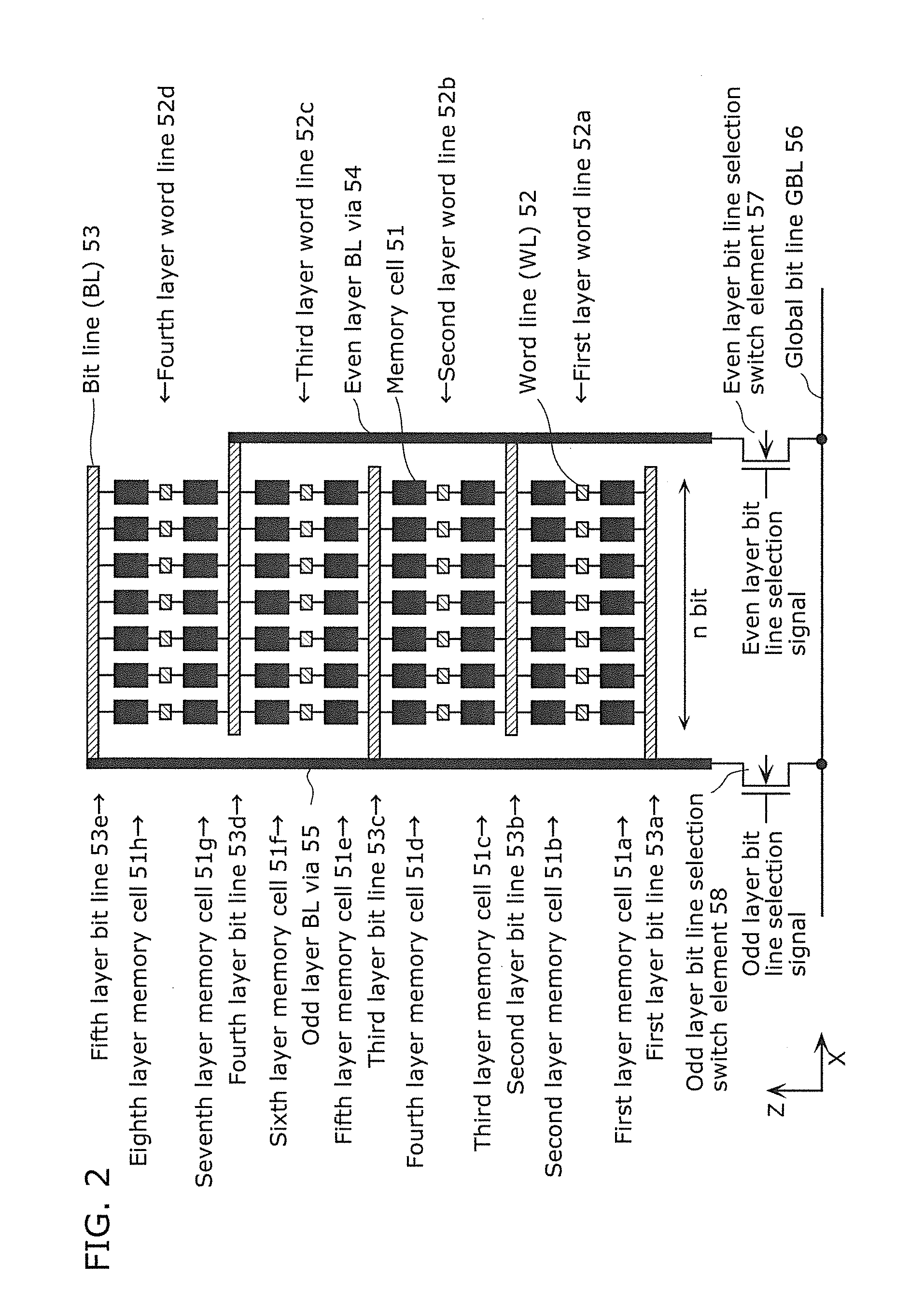Cross point variable resistance nonvolatile memory device
a non-volatile, memory device technology, applied in the direction of information storage, static storage, digital storage, etc., to achieve the effect of fast operation, stable writing operation, and easy manufactur
- Summary
- Abstract
- Description
- Claims
- Application Information
AI Technical Summary
Benefits of technology
Problems solved by technology
Method used
Image
Examples
reference example 1
Description of Circuit Structure
[0151]FIG. 10 is a diagram showing a cross section structure of a memory cell 51 included in a cross point variable resistance nonvolatile memory device having a multilayer memory cell array in Reference Example 1.
[0152]The memory cell 51 has a structure in which a first electrode 23 comprising tantalum nitride (TaN), a current steering layer 22 comprising nitrogen-deficient silicon nitride, a second electrode 21 comprising TaN, a first variable resistance layer 13 comprising oxygen-deficient tantalum oxide (TaOx), a second variable resistance layer 12 formed by oxidation of the first variable resistance layer 13 in an oxygen plasma atmosphere and comprising TaOy (xx, and a third electrode 11 comprising platinum (Pt) are stacked in this order. A lower wire 71 comprising aluminum (Al) is disposed below the memory cell 51, and connected to the first electrode 23 of the memory cell 51 by a first via 28. An upper wire 70 comprising aluminum (Al) is dispos...
reference example 2
[0376]In Reference Example 1, in the operation of writing to the multilayer cross point nonvolatile memory device, only one transistor out of the N-type current limiting element 90 and the P-type current limiting element 91 that has a greater substrate bias effect in a direction in which a current for low resistance writing flows through the memory cell is activated depending on the writing target memory array layer to which the memory cell belongs, to thereby perform the low resistance writing operation. In such low resistance writing, the current flow is limited in the source follower operation mode (i.e. the source follower mode).
[0377]Reference Example 2 is based on the same structure in which the N-type current limiting element 90 and the P-type current limiting element 91 are included, but differs in control method. Depending on the writing target memory array layer, a desired gate voltage is applied to the gate terminal of each of the N-type current limiting element 90 and th...
modification 1
[Modification 1]
[0557]FIG. 27 is a diagram showing a structure in which the threshold voltages Vt of the MOS transistors in the N-type current limiting element 90 and the P-type current limiting element 91 are adjusted to 0 V in the structure shown in FIG. 11 (such N-type current limiting element and P-type current limiting element are respectively referred to as an N-type current limiting element 90a and a P-type current limiting element 91a). In this modification, the threshold voltage of the N-type current limiting element 90 is referred to as a third threshold voltage, the threshold voltage of the P-type current limiting element 91 as a fourth threshold voltage, the threshold voltage of the other NMOS transistors as a first threshold voltage, and the threshold voltage of the other PMOS transistors as a second threshold voltage. Changing the threshold voltage Vt only for a predetermined transistor can be easily realized by a generally known method such as providing a mask only in...
PUM
 Login to View More
Login to View More Abstract
Description
Claims
Application Information
 Login to View More
Login to View More - R&D
- Intellectual Property
- Life Sciences
- Materials
- Tech Scout
- Unparalleled Data Quality
- Higher Quality Content
- 60% Fewer Hallucinations
Browse by: Latest US Patents, China's latest patents, Technical Efficacy Thesaurus, Application Domain, Technology Topic, Popular Technical Reports.
© 2025 PatSnap. All rights reserved.Legal|Privacy policy|Modern Slavery Act Transparency Statement|Sitemap|About US| Contact US: help@patsnap.com



